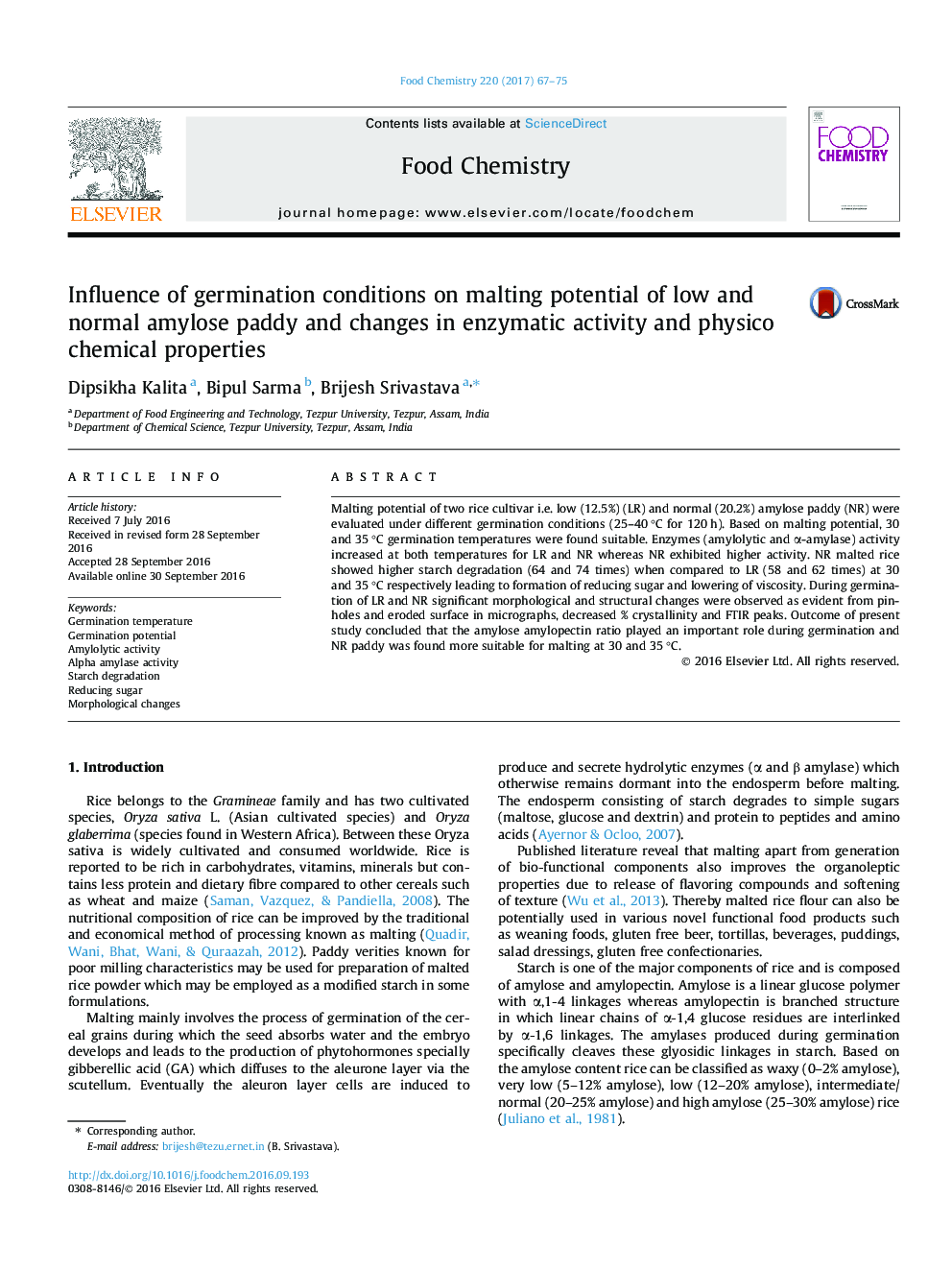| Article ID | Journal | Published Year | Pages | File Type |
|---|---|---|---|---|
| 5133950 | Food Chemistry | 2017 | 9 Pages |
â¢Based on the amylose content viz. low amylose (LR) and high amylose (NR) paddies were selected for germination.â¢The embryo development was observed in only two germinating temperatures i.e. 30 and 35 °C.â¢Higher amylolytic activity and starch degradation observed in NR compared to LR.â¢Pin holes, eroded surface from micrographs, loss of % crystallinity and change in FTIR peaks observed during malting process.â¢NR paddy was found more suitable for malting at 30 and 35 °C.
Malting potential of two rice cultivar i.e. low (12.5%) (LR) and normal (20.2%) amylose paddy (NR) were evaluated under different germination conditions (25-40 °C for 120 h). Based on malting potential, 30 and 35 °C germination temperatures were found suitable. Enzymes (amylolytic and α-amylase) activity increased at both temperatures for LR and NR whereas NR exhibited higher activity. NR malted rice showed higher starch degradation (64 and 74 times) when compared to LR (58 and 62 times) at 30 and 35 °C respectively leading to formation of reducing sugar and lowering of viscosity. During germination of LR and NR significant morphological and structural changes were observed as evident from pin-holes and eroded surface in micrographs, decreased % crystallinity and FTIR peaks. Outcome of present study concluded that the amylose amylopectin ratio played an important role during germination and NR paddy was found more suitable for malting at 30 and 35 °C.
